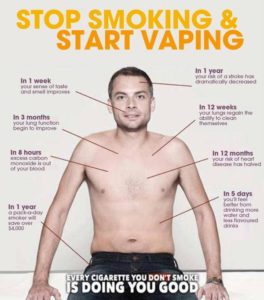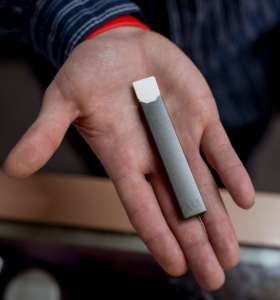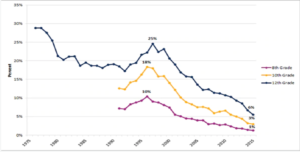That’s good news. Right?
Maybe not if you are a tobacco company executive!
 Nearly 90 percent of adult smokers began smoking before age 18. In fact, almost 10% start before they turn 13. Tobacco companies know they have to “catch ’em young” or not at all!
Nearly 90 percent of adult smokers began smoking before age 18. In fact, almost 10% start before they turn 13. Tobacco companies know they have to “catch ’em young” or not at all!
A Philip Morris executive wrote in 1957 that “hitting the youth can be more efficient even though the cost to reach them is higher, because they are willing to experiment, they have more influence over others in their age group than they will later in life, and they are far more loyal to their starting brand.” But that was way back in 1957; surely tobacco executives don’t still think that way. Do they?
The industry is much more careful today than back in the day. But in 1998, when shown documents showing that his company’s marketing targeted children, Andrew Schindler, President and CEO of RJ Reynolds admitted “I’m embarrassed for the company. We don’t track 14-to 17-year-olds today. I think it is wrong, frankly stupid and unnecessary. It certainly doesn’t happen today. We shouldn’t be discussing 14-year-olds in any way, shape or form.” But he did not even try to deny that his company had done just that!
Is “Vaping” the Answer?
That depends on the question. If you want to quit smoking, probably not. Research shows that vaping is not an effective way to quit or reduce smoking. Although they’ve been marketed as an aid to help you quit smoking, e-cigarettes have not received Food and Drug Administration approval as smoking cessation devices. A recent study found that most people who intended to use e-cigarettes to kick the nicotine habit ended up continuing to smoke both traditional and e-cigarettes.
If you are a tobacco company executive, you might ask another question. The industry has been aware for years that smoking rates have been dropping. If your product ultimately kills your customers, you have to have a steady stream of new customers. So for the industry, the question becomes “How do we addict a new generation to nicotine? If that is the question, then yes, vaping may be the answer!
Is Vaping Addictive?
Vaping might even be the new “gateway drug.” A study published in the New England Journal of Medicine suggests that e-cigarettes may increase the risk of addiction to cocaine and other drugs!
Is “Vaping” Safer than Smoking?

From the VIP Electronic Cigarette website
Vaping may be safer than smoking. E-cigarettes put nicotine into your lungs and bloodstream; but they do it without the smoke and tar of a regular cigarette. But e-cigarettes have been shown to contain detectable levels of known carcinogens and toxic chemicals.
Further, vaping, which introduces vapor into the lungs — which are supposed to be dry — may increase susceptibility to pneumonia-causing bacteria, a study published in the European Respiratory Journal has found.
Higher-end, “connoisseur” vaping, where users trust that the ingredients and process are safe, clean, and transparent is relatively safe. There are legitimate concerns, though, when it comes to cheaper foreign products, like gas-station e-cigarettes. While the FDA has approval to regulate e-cigarettes and vaping, very little actual “regulation” takes place. Essentially, vape makers are required to inform the FDA of what is in their product, but there is no public disclosure. Companies can tell customers as much or as little as they want.
In mass-market e-cigs made in foreign countries, where there is even less regulation, there are realistic concerns about the presence of heavy metals and banned chemicals. Some of the common ingredients in vape juice are known to turn carcinogenic when overheated; while higher-quality vapes control temperature to avoid this problem, many cheaper products do not. And, of course, there is the slim but still realistic chance of a battery exploding or catching fire.
What Is “Popcorn Lung?”
One of the particular dangers of popcorn lung is that the symptoms are almost indistinguishable from lots of other lung diseases, like asthma or bronchiolitis obliterans organizing pneumonia. Popcorn lung symptoms include:
- Shortness of breath
- Wheezing
- Dry cough
- Exhaustion
Because numerous other lung diseases cause the same symptoms, popcorn lung can often go undiagnosed, and therefore improperly treated, allowing the damage and scarring that causes popcorn lung symptoms to increase.
Teens and Vaping
This is surely good news for the tobacco industry, but it surely raises some public health concerns!
Vaping is especially attractive to teens, at least in part because of the “kid-friendly” flavors, such as peach schnapps, java jolt, piña colada, peppermint, bubble gum, or chocolate. Child and Adolescent Psychiatrist Sarper Taskiran, MD, attributes the recent rise in popularity to packaging and advertising. “The teens are after innovation and they’re attracted by sleek design and ease of use,” he says. “They look like an Apple product.”
Although vaping companies emphatically deny that they are marketing to young people, critics note such features in their advertising as youthful images and colors, animation, actors who appear to be under 21, and suggestions that vaping makes you happier and improves your social status. The FDA recently announced that it will be cracking down not only on illegal sales of e-cigarettes to minors, but also the “kid-friendly marketing and appeal of these products” because “we see clear signs that youth use of electronic cigarettes has reached an epidemic proportion.”
The biggest concern for teenagers vaping, especially among parents, is whether vaping can act as a gateway to smoking conventional cigarettes. There is ample evidence that young people who vape are highly likely to move on to conventional cigarettes.
The irony, then, is that vaping may help adult smokers quit, but has also been shown to lead teenagers to move from e-cigarettes to real cigarettes. A 2015 study shows that for 2000 adults who used vaping to stop smoking, more than 160,000 teenagers and young adults made the transition in the opposite direction. That is definitely a public health concern, and even more so if young people continue to vape as well as smoke – the risk of heart attack, for instance, is increased five times by both vaping and smoking.
In addition to the problem of vaping leading to smoking, a study in the journal Pediatrics found that the volatile chemicals in e-cigarettes, like propylene glycol and glycerol, can form carcinogenic compounds when heated, and that those compounds were found in the urine of the 16 year olds who were tested. While it’s just one study, it does indicate that vaping does cause a risk of exposure to potential cancer-causing substances – less than conventional cigarettes, perhaps, but still not as safe as vape marketing likes to claim.
What About “Juuling?”

Would you think this was a USB drive if you saw it in your child’s bookbag?
JUUL, a popular vape device that comes in fun flavors, looks like a flash drive and can be charged in a USB port, is especially concerning. JUUL delivers high levels of nicotine (One JUUL pod contains 20 cigarettes worth of nicotine), making the product extremely addictive. The company that makes and markets JUUL recently exceeded a $10 billion valuation faster than any company, including Facebook. JUUL sales now make up more than half of the e-cigarette market.
Almost one-fifth of middle and high school students report that they have seen JUUL used in school. JUUL is easy to hide because it looks like a flash drive and can be charged in a USB port. It also does not produce a strong odor. Many students report that they can conceal a JUUL pod in their sleeve and have actually used the products in class, while the teacher wasn’t looking! The transgressive nature of this action may make it more attractive to some teens.
 Tobacco use by adolescents has declined substantially in the last 40 years,. In fact, in 2017, less than one in 25 high school seniors was a daily smoker; down from one in four in 1997 and almost one in three in 1977!
Tobacco use by adolescents has declined substantially in the last 40 years,. In fact, in 2017, less than one in 25 high school seniors was a daily smoker; down from one in four in 1997 and almost one in three in 1977! Nicotine is the primary agent in both regular cigarettes and e-cigarettes, and it is highly addictive. Nicotine is also a toxic substance. It raises your blood pressure and spikes your adrenaline, which increases your heart rate and the likelihood of having a heart attack.
Nicotine is the primary agent in both regular cigarettes and e-cigarettes, and it is highly addictive. Nicotine is also a toxic substance. It raises your blood pressure and spikes your adrenaline, which increases your heart rate and the likelihood of having a heart attack. This is one of the most popular vaping-related searches on Google. The medical name is “bronchiolitis obliterans.” It can result from exposure to many different chemicals that cause inflammation and obstruction of the bronchioles, the smallest passages in the lungs.
This is one of the most popular vaping-related searches on Google. The medical name is “bronchiolitis obliterans.” It can result from exposure to many different chemicals that cause inflammation and obstruction of the bronchioles, the smallest passages in the lungs. In the last few years, vaping has overtaken cigarette usage among teenagers – in a 2016 Pediatrics study, 11% of 10th graders had used electronic cigarettes, versus 5% who used conventional cigarettes; more than 4% of middle schoolers had tried vaping. In all, more than 2 million teenagers admitted to vaping within the last 30 days.
In the last few years, vaping has overtaken cigarette usage among teenagers – in a 2016 Pediatrics study, 11% of 10th graders had used electronic cigarettes, versus 5% who used conventional cigarettes; more than 4% of middle schoolers had tried vaping. In all, more than 2 million teenagers admitted to vaping within the last 30 days.